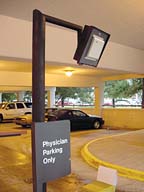There Are Gates, And There are GATES

“The Navy installed this barrier system in order to provide an adequate level of force protection while maintaining a high level of efficiency on the piers. In other words, we’ve been able to increase our force protection posture without impacting the mission of fleet support,” said Andrew Iuvale, anti-terrorism director, Navy Region Hawaii. “Before the Delta Scientific (Valencia, Calif.) SC3000 gates were installed, as one approached the pier they came upon a swing gate guarded by a sentry. It was the sentry’s responsibility exclusively to assess and then grant or deny access. For a bad guy to access the piers, they only had to overcome the sentry.”

“However, even if someone could take out a sentry in the gatehouse, they still cannot get through the gates,” Iuvale explained.
Some gates and gate operators aim more for convenience over high security, allowing vehicles in through use of an access card or radio frequency identification technology.

An example of a more typical gate operator, from Elmhurst, Ill.-based Chamberlain Professional Products, is the LifeMaster LA400 linear gate operator. In this design, a 24VDC motor is for durability and will operate gates up to 15-feet wide and weighing up to 550 pounds. In addition, an alarm-reset button has been added to the outside of the control box. This button resets the alarm in the event of a double-entrapment.
For More Information
More sources of gates, operators and vehicle barriers are available on the Web at www.securitymagazine.com. Use the magazine’s LINX service to search Security’s database of products, systems and articles.
Looking for a reprint of this article?
From high-res PDFs to custom plaques, order your copy today!





